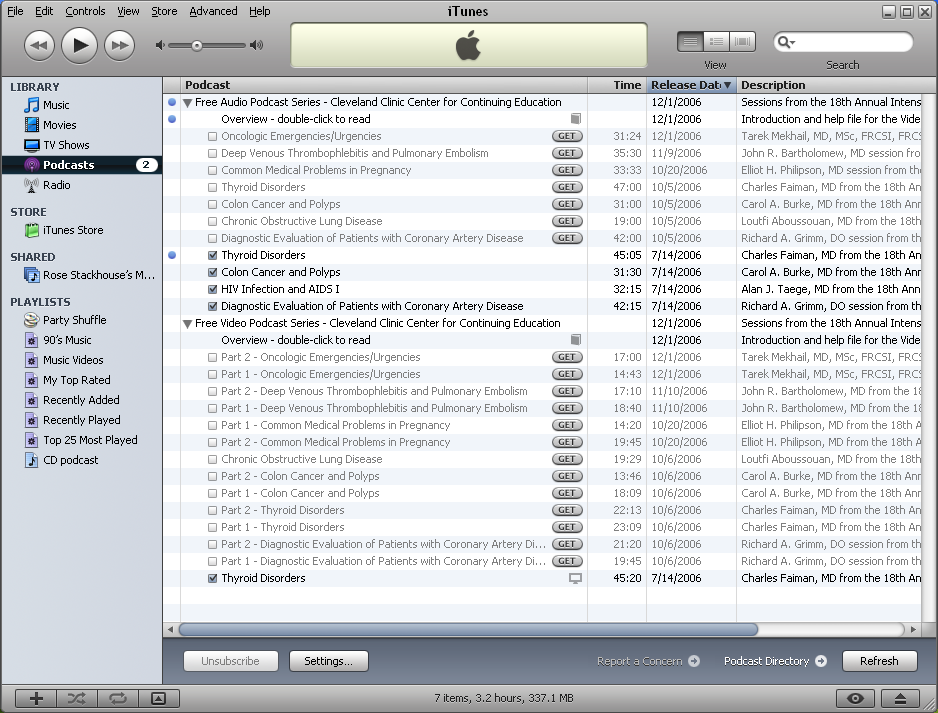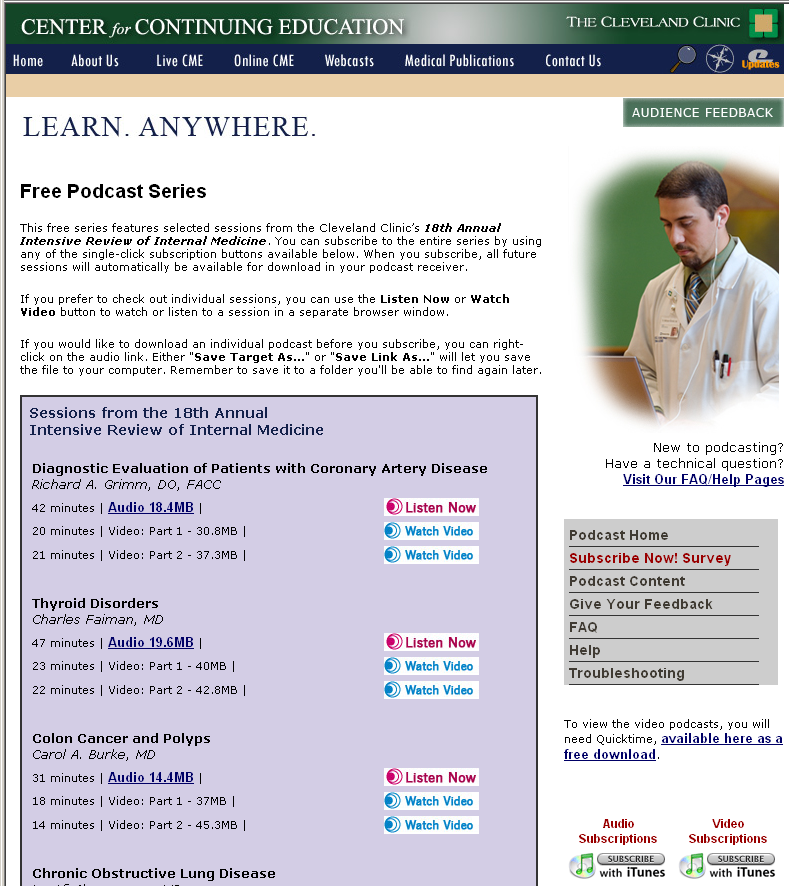Our Director came to us wanting to provide CME (continuing medical education) content to Physicians while they are traveling. We suggested offering content in a Podcast format – that could be downloaded and consumed at the medical professional’s discretion. He authorized the time and money to create a proof of concept – and we delivered on time and exceeded expectations. At its peak, we had over 55,000 subscribers each to all eight different podcast channels. The podcast experiment successfully built the name recognition of the Cleveland Clinic, and expanded the reach throughout the United States and several countries internationally.
Although we had over 300 webcast styled CME activities, they were not portable. With the busy lifestyle physicians live, finding a way they could utilize ‘downtime’ productively became part of our department’s mission. CME Podcasting was built to fill this void.
The content our director choose for the initial offering was repurposed recorded lectures from one of the departments live intensive review courses – presented for physicians initial certification in Internal Medicine, or renewing their certification. Each lecture required copyright review, and a signed waver from each presenter. We designed a video-safe background (white with Clinic branding colors for accents) and after the paperwork was completed, converted the presentations in to video files ready to be podcast.

There were a few bumps in the road – like the initial suggestion from our technology person that we use a new Dell Blade server that our department had just acquired. Didn’t work out. The first time we released a new podcast – it brought the server down. We then contracted with our Webcast media server vendor to have a folder there that we could use for podcasts. After we found a place to host the video and audio files (audio provided a smaller file), and changed the XML documents to drive the podcasts we proceeded with our ‘Test’ (figure).

Our initial test went well, accumulating over 30,000 subscribers in two months. Once the initial test was over, we had eight separate podcasts, each with over 50,000 subscribers on a constant basis.